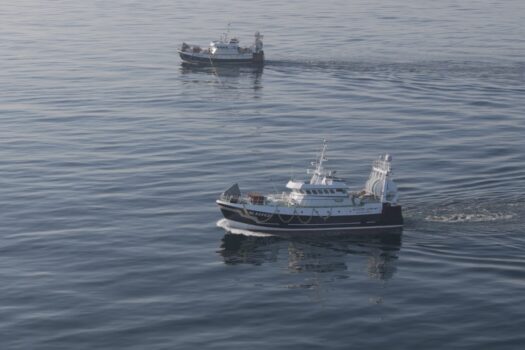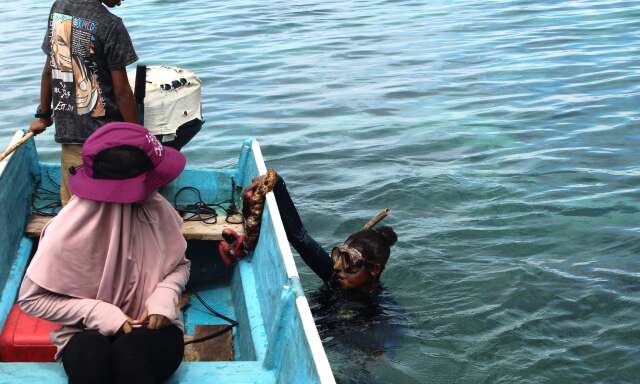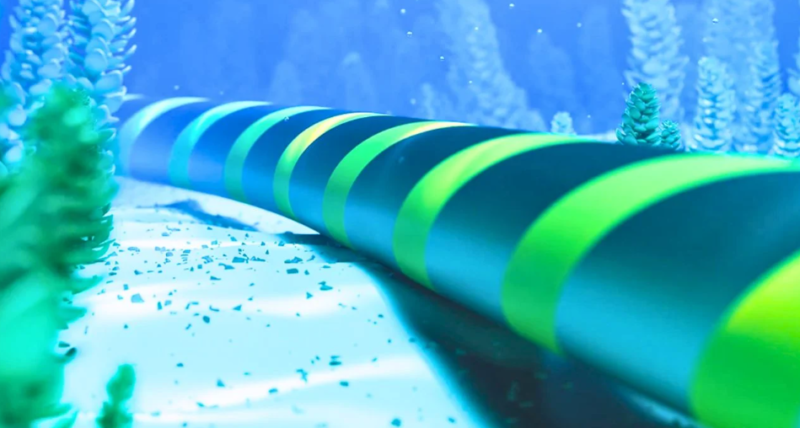As humanity faces daily climate disasters and scientists warn about the “very fabric of life on Earth” being at risk, the Intergovernmental Panel on Climate Change (IPCC) emphasizes that protecting and restoring ecosystems is the second most effective lever to tackle the climate emergency. Alongside international biodiversity experts (IPBES), they call for the creation of a coherent and effective network of marine protected areas (MPAs) to combat biodiversity collapse and climate disruption.
Contrary to these scientific recommendations, France — the world’s second-largest maritime power and host country of the United Nations Ocean Conference (UNOC) in June in Nice — protects less than 0.1% of its metropolitan waters. Yet, implementing real MPAs, prohibiting bottom trawling and destructive fishing practices, is within reach. Approximately 560 fishing vessels potentially depend on these MPAs, spending over 20% of their time there.
In about a century, we have depleted the ocean’s wealth: predatory fish populations have declined by 90% in the North Atlantic, large fish stocks have dropped by 99.2% in the North Sea, and nearly 60% of fish stocks remain overexploited in the Mediterranean. IPBES identifies fishing as the main driver of ocean destruction over the past fifty years. Industrial fishing, especially bottom trawling, severely damages marine ecosystems by destroying habitats, reducing fish populations, and impoverishing biodiversity. This situation threatens food security and endangers small-scale fisheries, vital to coastal economies and local employment.
Real Marine Protected Areas: Positive Impacts for Climate, Biodiversity, and Small-Scale Fishers
The solution to the ongoing degradation of oceans, climate, jobs, and public finances exists: marine protection. Establishing real MPAs covering 30% of our waters, banning industrial infrastructure and activities, and prohibiting high-impact gear such as trawling, is essential to halt marine ecosystem destruction, reduce the sector’s financial dependence on the State, and stop the social decline of artisanal fisheries. This must include strict protection zones covering one-third of these MPAs, where no extractive activities occur, ensuring effective and lasting ecosystem protection.
Coastal fishers using passive gears (lines, traps, nets) will be the primary beneficiaries, directly and exclusively gaining from spillover effects generated by strictly protected zones. Studies show fish biomass can increase 4.5 times inside strict no-take zones, and immediately outside, fish abundance increases by 33% and biomass by 54%.
A scientific consensus has emerged over the past decade defining effective marine protection:
- In 2016, at its World Congress in Hawaii, the IUCN called on States to “prohibit industrial activities and harmful infrastructure development in all protected areas.”
- In 2019, IUCN detailed recommendations specifying that industrial fishing must be excluded without exception from protected zones.
- In 2021, at the World Congress in Marseille, IUCN defined “industrial fishing” in MPAs as fishing by motorized vessels (>12m length x 6m width), or using bottom and midwater trawls, purse seines, and large longlines.
Dependency on Marine Protected Areas
To reconcile ocean protection and social justice, fishers currently operating in MPAs who would be affected by implementing international protection standards must be supported. Ifremer recognizes that a significant share of trawling and dredging activity indeed occurs in MPAs—estimated in France in 2022 at about 33% of fishing days and 25% of landed value for vessels over 12m using bottom trawl gears. Implementing real MPAs must include measures to assist these dependent vessels, which cannot access these areas anymore. This concerns all vessels over 12 meters and all trawlers, regardless of size.
Metropolitan France currently has 3,911 active fishing vessels. The vast majority will not be affected by MPAs and will benefit: small-scale coastal fishers operating vessels under 12 meters with passive gears (64% of the fleet) can continue fishing in two-thirds of the protected waters.
Further analysis shows the challenge of excluding trawling and vessels over 12 meters from MPAs is manageable:
- France has 275 trawlers under 12 meters, but data on their dependency on MPAs is lacking, as vessels under 15 meters are not required to have AIS tracking, limiting visibility.
- In 2024, Global Fishing Watch data show 286 offshore vessels (12–24m) were dependent on MPAs in metropolitan France, spending over 20% of their time there. This threshold, used during Brexit, helps assess real impact and plan transition support. About 37% of these vessels are not dependent, with 15% spending less than 5% of time in MPAs.
- Dependent fishers (over 20% time in MPAs) should be offered compensation and/or support to transition to small-scale coastal fishing.
- Large industrial fishing (vessels over 24 meters, 4.5% of the fleet or 175 vessels) is highly mobile and can easily shift effort outside MPAs. They must be excluded from MPAs and coastal zones to protect ecosystems and small-scale fishers.
Thus, at most 561 trawlers and vessels over 12 meters require support to implement real MPAs in metropolitan France. While detailed planning is needed, this study shows that, far from the industrial fishing lobby’s claims of upheaval, a public policy for marine ecosystem protection is feasible, especially as financing to support fishers exists.
What is missing is political will to innovatively redirect subsidies currently allocated to the fishing sector.
Dredging: A Special Case Due to Limited Spatial Impact and High Added Value
Dredging, mainly for scallop harvesting, is practiced by about 448 vessels in metropolitan France. This fishing method heavily impacts seabeds by disturbing sediments. It is therefore inconceivable to designate as “protected” zones where dredging occurs. Yet, France has labeled some historically dredged areas as “protected,” pursuing a policy focused on numbers rather than effective conservation.
Research from Institut Agro scientists shows dredging impacts are spatially limited, concentrated in bays like Saint-Brieuc and Granville: in the Atlantic, dredges disturb on average 0.4 km² per ton caught, compared to 5.3 km² per ton for bottom trawls. In the Mediterranean, trawls impact 30 times more area than dredges.
Given the income generated by scallop fishing for small-scale fishers in these historic zones—akin to offshore aquaculture with seeding—society may have chosen to sacrifice these already heavily altered habitats to maintain this activity.
Our view is that the last areas to be protected from a habitat perspective are historic dredging zones, whose footprint should be frozen. Beyond these, France must ban dredging in MPAs and prohibit new dredging zones. For instance, dredging must be stopped immediately in the Iroise Marine Natural Park, where this activity now affects vulnerable ecosystems like Maerl beds.
Financial Support for Fishers Dependent on MPAs
To fund real MPAs and the social and economic measures needed to support impacted fishers, the State must mobilize funds currently granted to industrial fishing.
This involves redirecting subsidies toward the social and ecological transition of the sector, reconciling ocean protection with social justice by:
- Gradually ending fuel tax exemptions for vessels over 24 meters, representing 4.5% of the fleet but receiving nearly 47% of fuel aid (~100 million euros).
- Allocating part of offshore wind energy taxes given to the fishing sector to support social and ecological transition.
- Directing European funds exclusively toward social and ecological transition, prioritizing small-scale coastal fisheries. France has only spent 22% of the 2021–2027 European Maritime Fisheries and Aquaculture Fund (EMFAF) budget, leaving 442 million euros available for transition and real MPA implementation.
A financed transition scenario thus exists to announce at the UN Ocean Conference the establishment of a genuine public policy to protect marine ecosystems. The only missing element is political will.
Further Information: Research Methodology
This unprecedented analysis focuses on metropolitan France’s MPAs and fishing fleet, using two main data sources:
- Fleet composition (number of vessels, gear types) from the Environmental, Economic, and Social Performance Assessment of Fishing Fleets: France Report by Institut Agro and MNHN (average 2017–2021). Calculations were made for fleets operating in the Northeast Atlantic and Mediterranean.
- Spatial fishing effort data (dependency on MPAs, etc.) from Global Fishing Watch for 2024 in the EU, crossed with the European fishing fleet register (March 2025 version).




